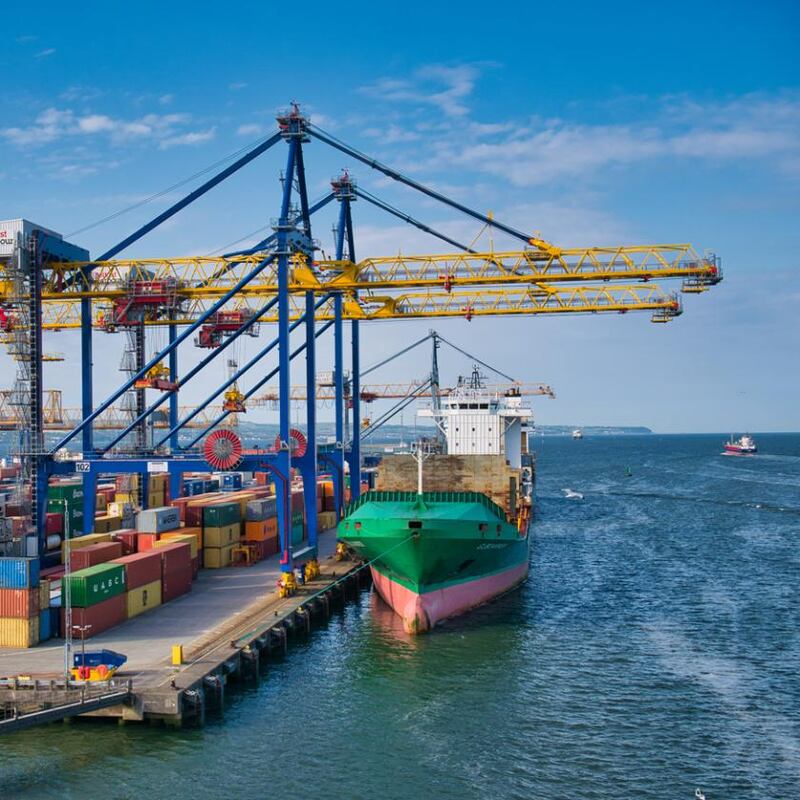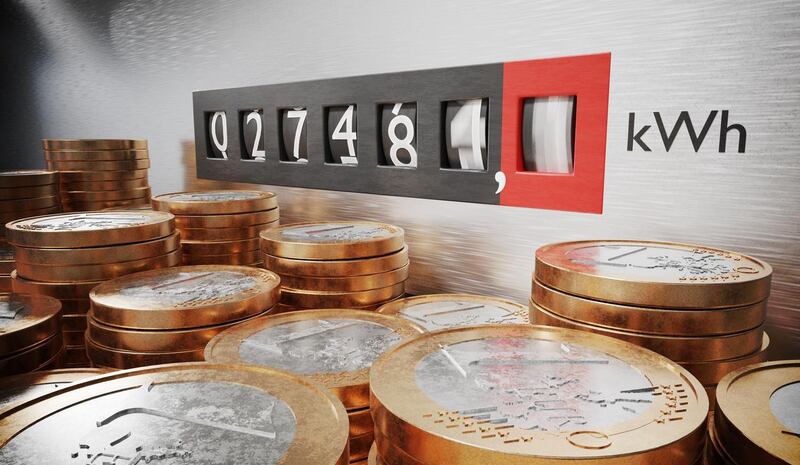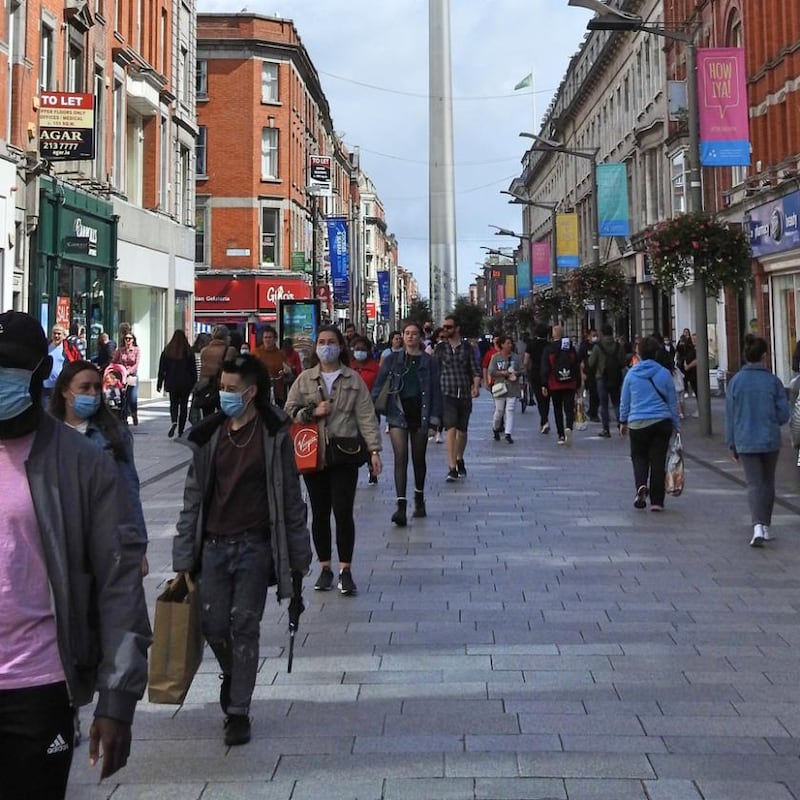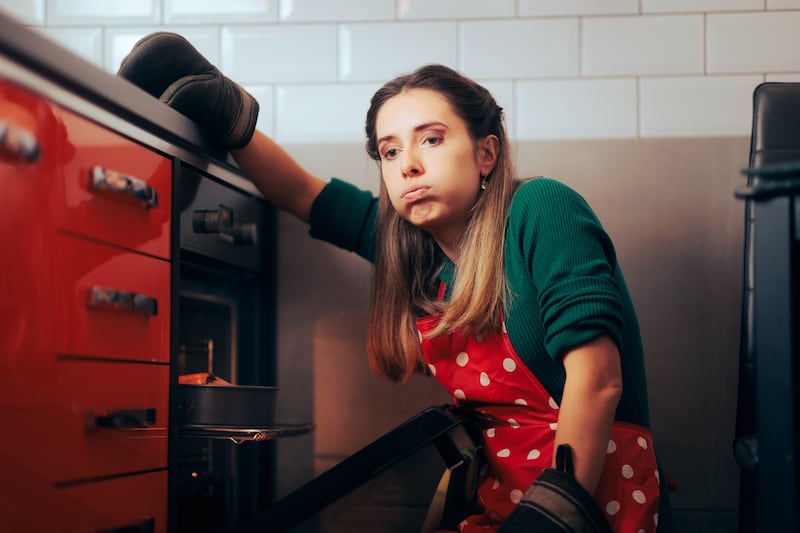At the start of the week, An Post announced that the cost of a stamp was climbing by 13 per cent, from €1.10 to €1.25. It adopted a scattergun approach when justifying an increase that is over twice the current rate of general inflation (5.5 per cent), something which is at a level not seen in more than 20 years.
The price hike was unavoidable and a reflection, the company said, of a spike in energy prices, inflation and the “true cost of maintaining a nationwide postal service with steadily falling traditional letter volumes”. It pointed to international air freight prices, which have increased by up to 360 per cent as a result of the pandemic, as well as transport cost inflation, which it put at 18 per cent, and electricity, gas and fuel costs, which are up 27 per cent year on year.
While any such increase is bad news, its impact is likely to be minimal for most people unless they are particularly reliant on the old-school mail system for all their communication needs.
However, the inflationary pressures outlined by An Post are not confined to stamps, not by a long shot.
People have begun realising in recent weeks, as their utility bills have fallen through their letter boxes with an unusually heavy thud and their weekly shopping trips have been completed, that costs are climbing fast and hitting them harder than perhaps they imagined.
Those rising costs are hitting them across almost all aspects of their lives, and the grim reality is that most Irish families will need to find over €2,000 more this year than they needed in 2021 just to keep food on their tables, their cars on the road and their homes even moderately warm and bright as the year progresses.
Anyone looking to rent a home or buy one for the first time is likely to be hit with increases that are substantially more savage than that.
'It is sad, we work very hard and yet we are not able to afford to heat our house properly during the winter'
House price inflation is now at levels not seen since the boomiest of times, while climbing rents means renters not already in a home can expect to pay €1000-plus more on putting a roof over their heads this year compared with last year.
What makes it even worse is that all these figures are net, ie before tax. To cover the higher cost of food, utilities and driving, most people will need to earn almost the same again. For most households, magicking up an additional €4,000 is a challenge, but it is one which will be insurmountable to many families on lower incomes and already stretched almost to breaking point.
The cold hard numbers put the latest inflation figures, always given in percentage terms, into harsh relief. The most recent data published by the Central Statistics Office (CSO) suggests that consumer prices rose by 5.5 per cent in the year to December, the largest jump in 20 years. For many people, the reality is even worse.
That reality looks something like this. “We just welcomed a baby boy, the increasing price of everything makes me wonder if we will be able to afford the new cost of living in Ireland,” says Danielle, who contacted The Irish Times on Thursday.
“Our weekly grocery shopping is already €30 up and I am not including formula and nappies, but the worst is the gas bill,” she continues. “I almost cried when I saw it. Our shower is connected to the gas so we reduced the numbers of showers to try getting it down a bit, we just turn on the heat – also gas – for two hours maximum a day. It is sad, we work very hard and yet we are not able to afford to heat our house properly during the winter.”
Rent is also a big problem for her family. “We moved to the middle of nowhere and still pay €800 monthly from a €2,000 income. How are we supposed to save for a mortgage? I am very concerned and sad with life at the moment.”

Danielle is not alone, and many thousands of people will identify with her story. The Government has been quick to point out that it is not to blame for the problems and it is true to say Ireland is not alone in dealing with spiralling inflation.
Inflation in both the UK and Germany closely mirrors Ireland, with the latest data putting the rates at 5.4 and 5.3 per cent respectively. In the US the current rate of inflation is 7 per cent. In the UK energy bills look set to jump by 50 per cent to about £1,915 (€2,270) per year for the typical household. Food prices are spiking there too.
However, when it comes to making ends meet, Irish people will be forgiven for not caring all that much how their British, German or American counterparts are coping in what looks almost certain to be the year of the big squeeze.
That squeeze has the Government worried. On Thursday it emerged that it was looking at rolling out expanded cost-of-living supports to offset the impact of rampant inflation and shield itself from the political fallout caused by rising prices.
Senior Coalition sources acknowledge that the cost of living was the most pressing issue faced by the Government as the threat of coronavirus remains suppressed. “Everyone agrees it’s the burning issue,” one senior source told The Irish Times, adding that there was a “strong feeling we need to do more”.
A second source said the Government would be “casting the net as wide as we possibly can to look at the options”, with consideration given to the “full range of costs and charges that people face to see what can be done”.
Before they can figure out what can be done, they will need to look at what has been happening.
'Undoubtedly, the biggest driver of the cost of living over the past year has been the huge increase in the price of energy'
On a granular level, the CSO has recorded an average year on year increase in the price of bread of 5.3 per cent, while the cost of pasta has climbed by 6.4 per cent. Poultry has increased by 3.5 per cent. Coffee and tea have gone up by 2.5 per cent and 1.9 per cent respectively. And the “oils and fats” category, including butter, vegetable oils and olive oil, has jumped by 4.4 per cent.
Anyone who has done a big supermarket shop in recent weeks will have no doubt noticed prices creeping up in the aisles. The price of bread, milk and butter has gone up by 10-30 cent. While such increases seem modest, they mean a family buying three sliced pans, 10 litres of milk and one 454g packet of butter weekly will be worse off by just under €100 this year compared with 2021.
Many of the increases have been replicated to the cent across the Irish grocery landscape, thanks at least in part to the practice of price matching, a key policy adopted by the State’s leading supermarkets.
Up and down the aisles prices have climbed steadily for months. If the cost of an average weekly shop has climbed by just €15 (and many people will find themselves spending considerably more than that each week), groceries will cost €780 more over the course of the next 12 months than they did in 2021.
Even before grocery inflation began to become a feature of daily life, the cost of heating and lighting our homes had climbed dramatically. The fossil fuel market is notoriously volatile at the best of times and this is not the best of times. The price of gas and coal has gone through the roof all over the world in recent months as the global economic recovery gathers paces and demand spikes. Supply issues with gas coming out of Russia have also exacerbated the problem and put pressure on prices. The unfolding situation in eastern Europe in recent weeks means problem is not likely to get better any time soon.
The impact of soaring fossil fuel prices on people’s pockets does not stop there. A litre of petrol or diesel is now at least 40 cent more than this time last year, which means that an average motorist will have to spend an extra €500 to keep their car on the road.

"Undoubtedly the biggest driver of the cost of living over the past year has been the huge increase in the price of energy," says Daragh Cassidy of price comparison and switching website bonkers.ie.
“Gas, electricity and petrol and diesel have all hit record highs. Unfortunately, because we need energy to produce so many things, this then feeds into price increases in almost every other sector.”
In 2022, Cassidy says, households will be paying “around €700 to €800 more for their gas and electricity on average. However, some of the smaller suppliers have announced price hikes that will add over €1,300 to their customers’ annual bills. So as you can see the Government’s €100 electricity credit isn’t going to make much of a dent in people’s pockets.”
In recent years the rising cost of rent, transport and health has largely been offset by falling costs for food, communications and clothing, for example. This is now no longer the case, with price rises happening across the board in many sectors.
Take communications and streaming services. Netflix announced a 13 per cent price hike to its premium package last February, and shortly after Disney+ announced a 29 per cent price increase to its service. A family with both of these plans is now paying almost €324 a year, an annual increase of €48.
Last April, mobile telephone service GoMo increased the price of its popular sim-only deal by more than 15 per cent to €14.99 a month for new customers. Eir implemented a €6 a month increase to many of its broadband and phone plans back in September.
Meanwhile, Three plans to increase the monthly charge on its billpay plans by 4.5 per cent every year, starting from April, for new customers and those upgrading or signing new contracts. Vodafone has said it will increase prices by the rate of inflation in January plus 3 per cent every year, also starting in April.
'Container shipping costs have gone up by around 600 per cent because of increased demand'
“While services from the likes of Netflix, Disney+ and GoMo still represent very good value in my opinion,” Cassidy says, “this is the first year in recent memory when there have been so many price increases across the telecommunications sector.”
Retail analyst and TU Dublin academic Damian O’Reilly says it is not hard to identify the price pressure points. Like Cassidy, he zeros in on energy price hikes and adds Covid, commodity prices and supply chain issues across the world as further contributing factors.
According to the United Nations, global commodity prices have climbed by around 30 per cent over the past year, and that is feeding into many food price increases, O’Reilly says.
“There have been higher costs in meat processing plants because of PPE requirements and social distancing measures, so that has driven up meat prices. Over the course of the pandemic there has also been an increase in demand for groceries as people have been eating at home more and higher demand leads to higher prices.”
Even though pandemic impacts were easing off, he says, prices were still higher than in pre-Covid times.
“The supply chain is also an issue, as is the impact Brexit had in getting products into the country. The input costs of bread, for example, have gone up because of Brexit – all of the flour used to make Irish bread comes from the UK, and while that can be sold without any duty, a key ingredient in the flour comes from Canada, and that has lead to higher prices.
“Container shipping costs have gone up by around 600 per cent because of increased demand, and because during the pandemic many of the containers ended up in the wrong place at the wrong time during lockdowns. And then you have the shortage of truck drivers in the UK, which has also put pressure on prices.”

The elephant in the room is interest rates. They have long been used as a lever – sometimes the only lever – for central banks all over the world to control inflation. The European Central Bank is sitting on its hands for now, but that will have to change if the current situation persists.
And what would that mean? For people without a mortgage or with a fixed rate mortgage, it might not mean a whole lot. But for those on a variable rate or a tracker, if interest rates were to go up it would be very bad news indeed.
“In order to deal with rising inflation the ECB will have to act eventually,” Cassidy says. “I don’t think there’ll be an increase until the end of this year – and even then it should only be small. But let’s say the ECB raises rates by just 0.5 per cent. For someone with €200,000 remaining on their tracker mortgage over 20 years, you’re looking at an increase in repayments of around €45 a month.”
If you re an average first-time buyer borrowing €250,000 over 30 years at the average rate of 2.71 per cent, a 0.5 per cent increase would add almost €80 a month to your repayments if you’re on a variable rate. If such a relatively modest increase were to be spread out over the lifetime of that loan, it would see the total cost of that mortgage over 30 years jump by an eyewatering €28,800.
For now, though, all we can do is hope things sort themselves out, and sooner rather than later.

















